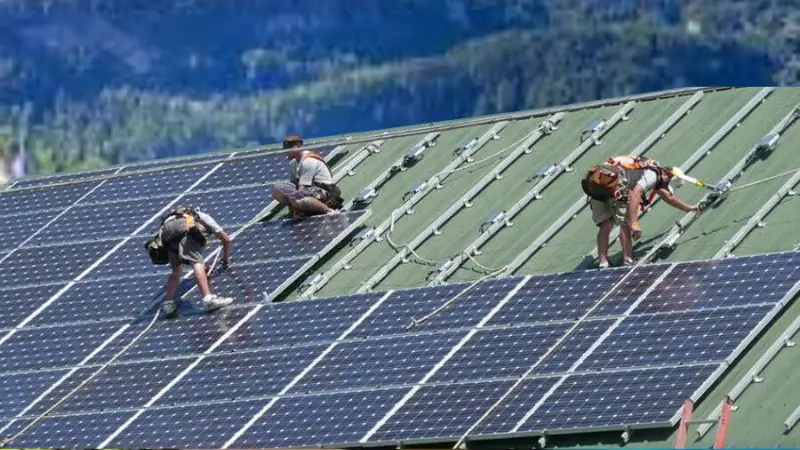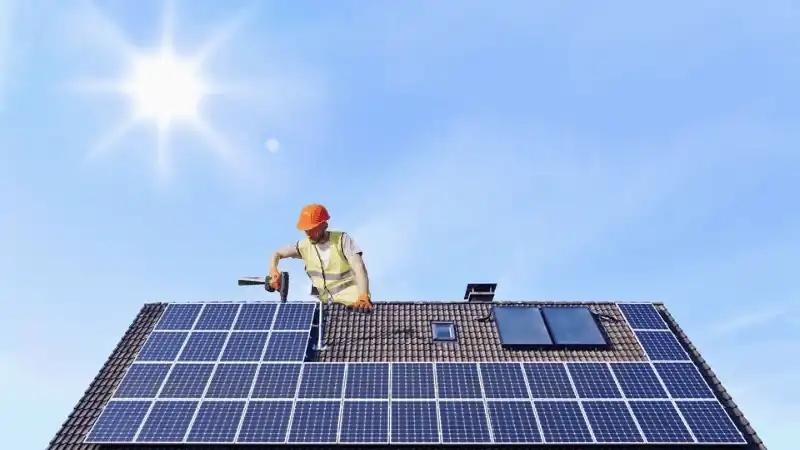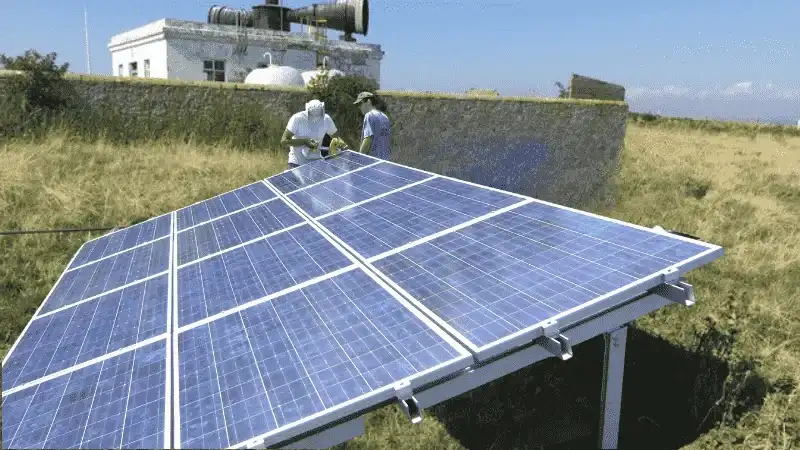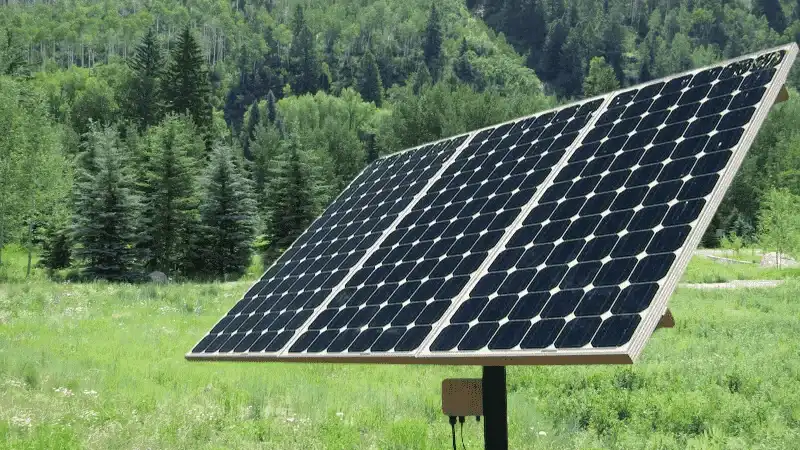What is the best way to installation of solar panels system?
Updated: 13 Sep 2024
295

In the event that you’re thinking about installing a solar panel system, the initial step is to have an on location evaluation, where somebody can assess the location.
After the evaluation, a proposal with the cost, payback, and available impetuses will be tweaked for your location. The second you choose to push ahead with the installation of solar system. It initiates obtaining an Interconnection Agreement (ICA) and grants.
After obtaining the grants, installation can start, typically taking a few days for residential tasks and a little while for commercial undertakings.
When installation is finished, the system will be appointed, and final examinations will be directed. After turning on the system, it is essential to maintain a web association with the solar array and guarantee no unnecessary dirtying on the panels.
Long haul warranties with the manufacturers will be active, and your installer ought to also give quality warranties. Interaction and Courses of events for Installing Solar panels system
Installation of solar systems requires careful planning and skill to guarantee that solar systems installed safely and really.
Here are a general moves toward follow:
Installation of solar system requires careful planning and expertise to ensure that solar system installed safely and effectively.
Here are some general steps to follow:
Pick a location
The location of your home solar system is critical to its performance.
Ideally, let’s install solar panels in an area with a lot of daylight, preferably facing south. The location ought to also be accessible for shading from trees or different hindrances.
On location Evaluation
To start with, you should choose where to install the solar panels.
In this way, the subsequent stage is having somebody emerge and do an on location evaluation where they can see the location of where you want to place the solar array.
Existing Help Size
You should know the size of your current help, your transformer, and any different particulars about your task or location.
Importance of On location Evaluation
That’s a great point, and solar is site-specific.
If you’re looking at a potential installer doing it remotely over the phone or the internet, they will need more insight to be on-site to look at what’s happening for that specific location.
Also, on that site visit, a copy of the electric bill should be provided because that will allow the installer to design the system to the appropriate size and see the price they’re paying for the electricity.
This factor will determine the payback for the solar project.
Electric Bill and Historical Usage
Evaluate your energy needs
Before installing solar panels, it’s essential to assess your energy needs. It will help you determine the size and type of solar system that suits you.
System Design
So, on the utility bill, the installer will look at your historical usage.
So, the installer knows how big or how large to build the system.
30-Year Cash Flow
Also, any reputable company will show you a 30-year cash flow so you understand your investment and how much you’ll be saving.
They go solar and get much of that information from your utility bill.
Proposal and To-Scale Model
Customized for Customer’s Location
So, once they have the site visit completed, within a few days, they will have the proposal completed, and that will be customized specifically for their location, for the customer’s location.
The installer will have rendered a to-scale model of how the solar would fit on the roof or ground to show you how much space is needed.
Price, Payback, and Available Incentives
At that point, the solar installer would give you the cost of home solar system, the payback, and all the available incentives and give you a clear picture of what this investment would look like.
After the site visit, you become an informed solar consumer in your location.
And you should be at a point to make that decision on whether or not solar is right for you. Based on this information, it makes sense, assuming you decide on solar.
Determine your budget
Nearby planet groups can be costly, so deciding your spending plan prior to making any purchases is fundamental.
Solar can be made more affordable through a variety of financing options, such as leases and loans.
Signing the Contract and Deposit
Interconnection Agreement (ICA)
Thus, somebody is ready to push forward with a solar installation. In that case, the initial step is to sign the contract and a store, which would initiate the ICA, which stands for Interconnection Agreement with Utility.
Licenses are required?
Obtain necessary licenses
Most local states require licenses for solar installations. Make sure to obtain all necessary grants prior to starting your installation.
Permitting
First, we must ensure we can install this solar project from a jurisdiction and permitting standpoint.
Three permits are required: a building permit, an electrical permit, and the interconnection application or the interconnection permit from the utility company.
Process Duration
That process can take a while to develop the electrical diagrams and all of the necessary paperwork that goes into permitting.
How long should an average solar array take to go from the point that you sign the contract to the fact that you have your permits in place and you can start ordering parts?
Residential
So, for a residential solar panel project, you’re looking at two to four months, depending on how quickly your utility returns to the installer.
Commercial
For a commercial project where there are significant service upgrades required or feasibility studies needed, that process can take three to six months, even longer in certain situations.
Ready to install this solar
So now that we’ve completed all the administrative components, applied for the permits, received the licenses, and are ready to install this solar project, what happens next?
There are primarily two types of solar panel mounts on the roof:
There are primarily two types of solar panel mounts on the roof:
Flush Mounts

Additionally, we install flush mounts straightforwardly onto the roof of the structure, and the panels sit flat against the roof surface.
Moreover, we secure them to the roof with brackets and screws and typically use them for low-slant or flat roofs.
In addition, Flush mounts are the most generally perceived sort of solar panel mount for residential installations.
Tilt Mounts

In addition, tilt mounts, also known as adjustable mounts, allow you to adjust the angle of the solar panels for maximum daylight receptiveness. Additionally, we secure them to the roof with brackets and bolts, and you can change them manually or using a mechanized system. Tilt mounts are ideal for roofs with a higher slope, as they allow you to enhance the angle of the panels to capture more daylight.
Can we use flush mounts and tilt mounts for various kinds of roofs?
You can use both flush and tilt mounts for various kinds of roofs, including asphalt shingle, metal, tile, and flat roofs. The choice of mount depends upon the kind of roof, the available space, and the angle and bearing of the daylight. It is essential to talk with a professional solar panel installer to conclude the most ideal kind of mount for your particular roof and solar energy needs.
Pole mounts

We install pole mounts, as the name recommends, on a solitary post, typically made of steel or aluminum.
We anchor the pole to the ground and attach the solar panels to the highest point of the post.
pole mounts are ideal for locations with restricted space or shading issues, as the post can be installed in an area with optimal daylight openness.
You can adjust the angle of the solar panels to improve energy yield over the course of the day.
We usually use post mounts for commercial and industrial installations.
Roof-ground mounts
They are also known as canopy or carport mounts on a design upheld by a roof and the ground.
They are typically utilized for parking structures or covered outside spaces.
We mount the solar panels on a design attached to the roof and upheld by segments on the ground.
Roof-ground mounts are ideal for areas with restricted space, as they give shade and solar capacity to parking parts or outside areas.
While generating clean energy, they also shield vehicles from the components.
Can pole mounts and roof-ground mounts be utilized in a variety of locations?
Pole and roof-ground mounts are versatile and can be utilized in various locations.
They offer the advantage of not needing solar panel installations on the roof of a structure, which can be beneficial in areas where roof installations are not practical or allowed.
Collaborating with a professional solar installer is essential to decide the best mount type for your particular location and solar energy needs.
How solar panels are installed?
Solar Systems Installation
Presently, you see professional laborers starting to accomplish physical work on your solar undertaking.
In this way, the installation of a residential solar panel project typically takes a few days.
Installing an average commercial system, say 100 kW, will take approximately a little while.
Find a reputable installer
To guarantee the right installation of your home solar systems, working with a qualified and experienced installer is essential.
While searching for an installer, think about their permit, insurance, and reputation.
Solar installation structure
You should mount the solar panels onto your roof or a separate construction.
Mounting them requires careful attention to safety and legitimate installation strategies.
Decide the sort of mount.
Solar panel mounts, like roof, pole, and ground mount panels, are available.
Pick the one that best suits your location and necessities.
Really take a look at the roof
Prior to penetrating openings in the roof, actually look at the roof’s condition.
Guarantee supporting the heaviness of the solar panels and mount is adequately solid.
Mark the locations
When you pick the location and mount type, mark the locations where you will install the mount on the roof.
Install flashing
Prior to installing the mount, you should install flashing to keep water from leaking through the roof. Apply sealant to the lower part of the flashing to create a watertight seal.
Install the mount
Then, attach the mount to the roof utilizing fasteners and screws. Make sure it is level and secure.
Attach the rails
Attach the rails to the mount once you have the mount in place. These rails will hold the solar panels.
Install the solar panels
Finally, solar panels installing on the rails, guaranteeing they face the correct bearing.
Install the inverter
The inverter changes over the DC power delivered by the solar panels into AC power that your home can utilize. A qualified electrician ought to install the inverter.
Associate the panels
Associate the panels to the inverter and the electrical lattice or battery bank.
Interface with the network.
When the solar system installed, it should be associated with the network to sell any overabundance power back to the service company.
Test the system
After the solar system installed, test it to guarantee it works accurately.
Screen performance
It’s essential to screen your solar system’s performance to guarantee that it creates the normal amount of energy.
Most systems accompany checking software that allows you to track energy creation after some time.
By following these means, you can install a solar system that meets your energy needs and assists you with saving cash on your energy bills.
Authorizing and Final Reviews
So presently we’ve finished the means of getting it allowed.
We showed up; we completed the solar installation.
The next step is to commission the system or confirm that it’s working appropriately and as designed.
In this stage, your solar installer will perform those on-site inspections.
Electrical and Building Inspections
Once your solar installer completes the on-site inspections, they will obtain final inspections, including electrical and building inspections, and get those approved.
Turning on the System
And then comes the enjoyable part: turning on that system and flipping that switch. At this point, you can experience the excitement first-hand.
Maintenance and Warranties
Internet Connection and Soiling
At that point, the system starts feeding power into your meter, reducing your electric bill, and you get to see the benefits of solar for the first time. Consequently, you’ll notice the positive impact.
First, maintain your internet connection to the solar array to monitor it and address any issues or maintenance for solar panel needs with your solar installer.
Second, ensure that there isn’t excessive soiling on your array other than normal pollen or weather-related soiling. If excessive soiling is present, wash it off the panels.”
The rain will wash it away, but if you live or have something in the area creating excessive soiling, you’ll want to clean those off the panels. And then your warranties are now in effect. Your system is live.
Manufacturer and Workmanship Warranties
Your panels probably have a 25-year warranty, and your inverters have warranties ranging from 10 to 20 years.
Once your system is live, your warranties are now in effect. With this milestone achieved, you can enjoy the benefits with confidence.
Your installer should also have craft warranties that, after commissioning, they see the system is working properly.
Then, from then on, you have some craft warranty that anything that should go wrong in a timeframe, and typically, that’s going to be 5, 10, 15 years.
They provide the labor to fix any problems that would go wrong with the equipment.
Maintenance-Free System
So now you’re at the point where Your solar installer should take care of your solar system, which should be up and running virtually. So now you’re at the point where Your solar installer should take care of your solar system, which should be up and running effectively. Maintenance for solar panels is free on your part.
You also have long-term warranties with the manufacturers for all the hardware in your system.
What are the steps involved in installing a solar panel system?
The means remember for site evaluation, proposal customization, obtaining grants, installation, dispatching, and final examinations.
How do I choose the right location for my solar system?
Search for ample daylight, preferably facing south and accessible to shading from trees or checks.
What types of solar panel mounts are available for different roofs?
Flush mounts are ideal for low-incline or flat roofs, while slant mounts allow adjusting panel angles. Shaft mounts and roof-ground mount solar panels offer alternatives for explicit locations.
How long does it take to install a solar system?
Residential activities typically take a few days, while commercial ventures can range from half a month, contingent upon size and intricacy.
What should I consider for maintenance and warranties after installation?
Maintain a web association with screen the system and wash off unreasonable dirtying. Appreciate long haul warranties from manufacturers and craft warranties from your installer.
Summary
In summary, solar panels installing for a residential project can vary from three to six months.
For a commercial project, the duration can range from the best-case scenario of three months to even nine months, depending on your utility and the project’s scope.
The process involves the development, installation, and energizing of the system.
That gives you a window into the timeframe for the solar project that you’re looking into.
Please Write Your Comments